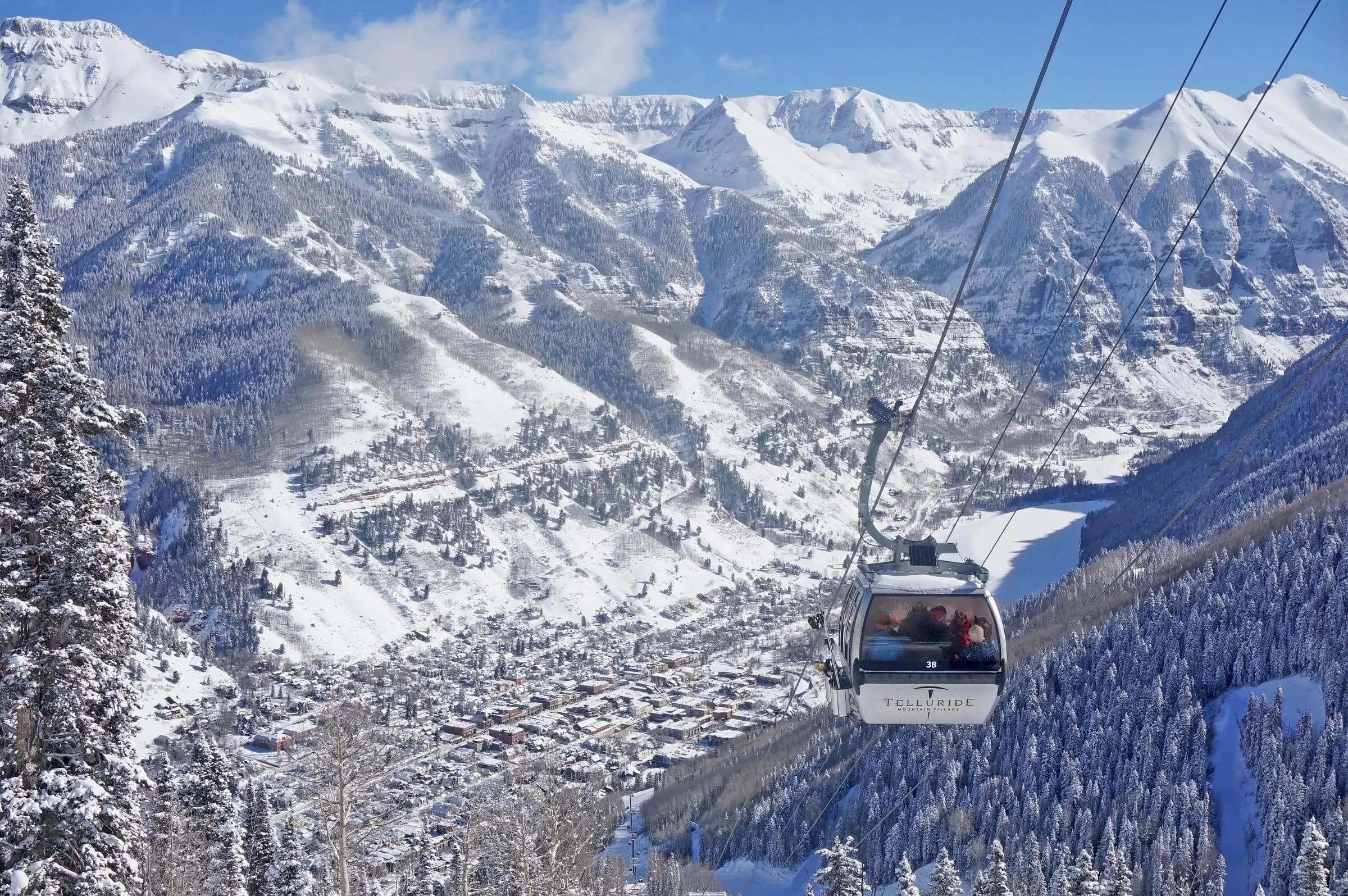
10 Best Ski Resorts in Colorado Ranked for the 2025-26 Season
Published Date:
Categories
Colorado stands as the undisputed capital of American skiing, combining reliable snowfall, varied terrain, and the legendary Rocky Mountain powder. With over 300 days of sunshine annually and some of the most accessible high-elevation skiing in North America, it's no wonder why Colorado draws skiers and snowboarders from around the globe.
This ranking analyzes each resort based on objective metrics: terrain variety, annual snowfall, lift infrastructure, and overall value—without the marketing fluff you'll find on resort websites. The data comes from verified resort statistics for the upcoming 2025-26 season.
I've organized this list in countdown format, starting with #10 and building to Colorado's absolute best ski destination. For each resort, you'll find straightforward assessments of strengths and weaknesses, along with practical tips to maximize your time on the mountain.
#10: Aspen Buttermilk - Perfect for Progression
Buttermilk Mountain might be the smallest in the Aspen family, but its 470 acres deliver an exceptional environment for skill development while hosting world-class terrain park features as the long-time home of the Winter X Games.
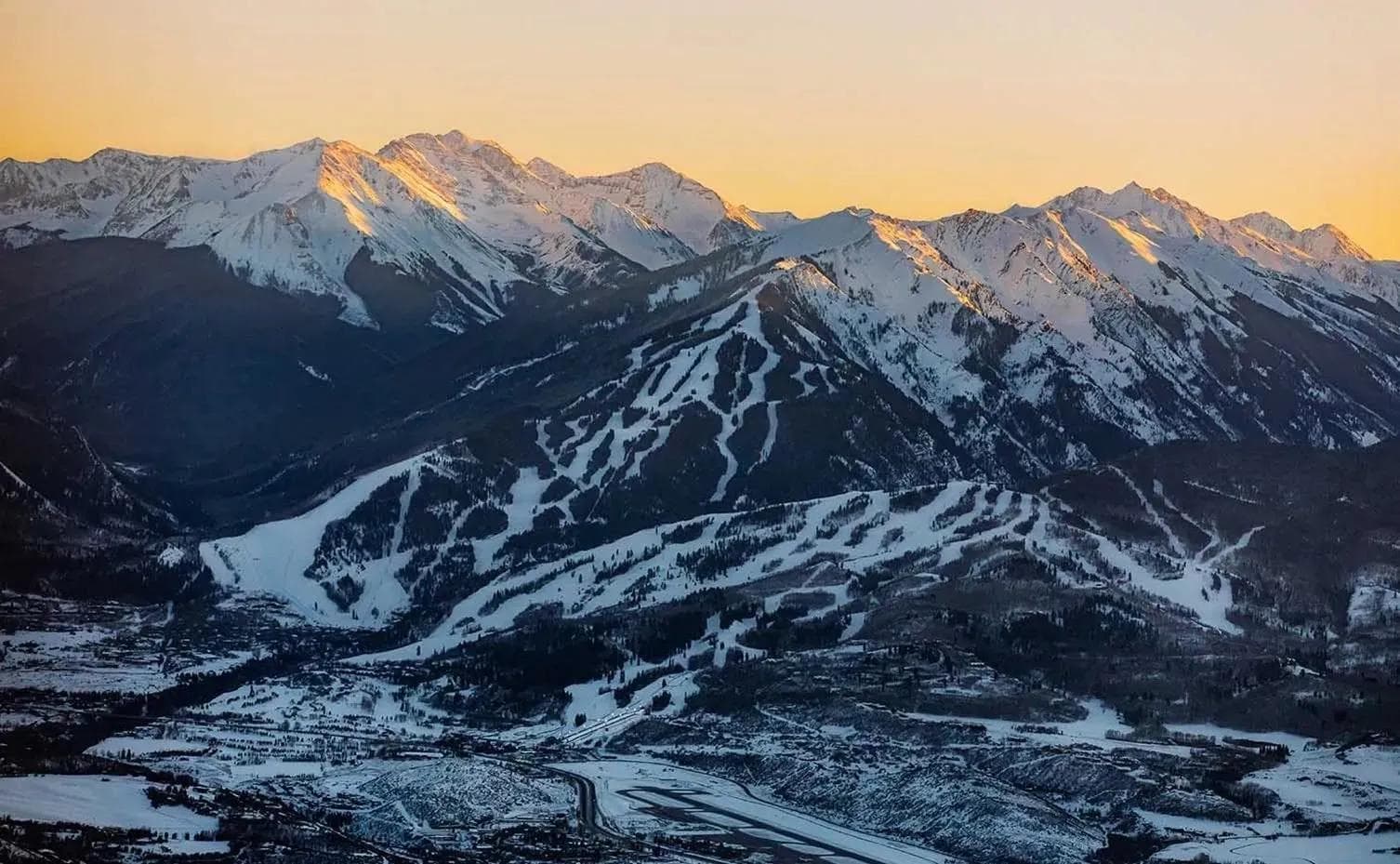
Aerial shot of Aspen Buttermilk. Credit: Aspen Resorts
Key Stats:
- Base elevation: 7,870 ft (2,399 m)
- Summit elevation: 9,900 ft (3,018 m)
- Vertical drop: 2,030 ft (619 m)
- Skiable acres: 470
- Annual snowfall: 210 inches
The terrain breakdown skews heavily toward learners and intermediates, with 35% beginner, 39% intermediate, and 26% advanced/expert terrain. This makes Buttermilk ideal for families and those looking to progress their skills in a less intimidating environment than neighboring Highlands or Snowmass.
Buttermilk's modern lift network ensures minimal wait times, with three high-speed quads efficiently serving the mountain. The Summit Express whisks you to 9,900 feet in just over 8 minutes, while two additional chairlifts and a surface lift provide seamless connections across the mountain.
However, the $259 peak day ticket price is eye-watering for the limited terrain. Look for multi-day passes or package deals to bring down costs. If you're visiting the Aspen area, consider splitting your time between Buttermilk and the other Aspen mountains to maximize value.
Best for: Families, park riders, and skill progression
Avoid if: You're hunting steep terrain or deep powder
Insider tip: Visit in mid-December through early April for consistent conditions with perfect corduroy on beginner runs in the morning and softer snow on west-facing slopes in the afternoon.
#9: Arapahoe Basin - Long Season, Authentic Vibe
Standing tall at 13,050 feet, A-Basin delivers Colorado's longest ski season and some of North America's most challenging terrain across its 1,428 acres. Often open from October through June (sometimes even July), this mountain maintains its authentic character while offering terrain for all skill levels.

Aerial view of Arapahoe Basin. Credit: Arapahoe Basin
Key Stats:
- Base elevation: 10,520 ft (3,206 m)
- Summit elevation: 13,050 ft (3,977 m)
- Vertical drop: 2,530 ft (771 m)
- Skiable acres: 1,428
- Annual snowfall: 350 inches
A-Basin's terrain distribution favors advanced skiers, with 49% advanced, 24% expert, 20% intermediate, and just 7% beginner runs. The Steep Gullies and East Wall areas provide legitimately challenging terrain that rivals anything in North America. The Beavers and Steep Gullies expansion added 468 acres of advanced and expert terrain in recent years, featuring glades, chutes, and open bowls.
The mountain's nine lifts efficiently move skiers around, though the terrain can feel somewhat disconnected at times. The Lenawee Express and Black Mountain Express lifts transport skiers to the mountain's renowned upper bowls, while the Beavers area is serviced by a high-speed quad.
At $99 for a peak-day ticket, A-Basin offers significantly better value than the Vail-owned resorts and maintains a local, laid-back atmosphere. The mountain is also part of the Ikon and Mountain Collective pass programs, offering additional value for season pass holders.
Best for: Advanced skiers, spring skiing, value-conscious riders
Avoid if: You need extensive beginner terrain or luxury amenities
Insider tip: For the ultimate spring skiing experience, target late April to early June when other resorts have closed but A-Basin's high elevation maintains good snow conditions.
#8: Aspen Highlands - Local's Choice for Steep Terrain
Rising to 11,675 feet, Aspen Highlands stands as one of North America's most distinctive ski experiences. Known for the legendary Highland Bowl and uncrowded slopes, this 1,040-acre terrain includes everything from gentle learning areas to some of Colorado's most challenging descents.

The legendary peak of Aspen Highlands. Credit: Aspen Highlands
Key Stats:
- Base elevation: 8,040 ft (2,450 m)
- Summit elevation: 11,675 ft (3,556 m)
- Vertical drop: 3,635 ft (1,106 m)
- Skiable acres: 1,040
- Annual snowfall: 240 inches
The terrain distribution heavily favors skilled skiers, with 65% expert, 12% advanced, 23% intermediate, and no dedicated beginner runs. The Highland Bowl requires a 45-minute hike but rewards with exceptional steep terrain and the best views in the Aspen area. The effort required to access these areas keeps crowds minimal, even during peak periods.
Highlands' five chairlifts include three high-speed quads that efficiently transport skiers across the mountain. The Deep Temerity lift provides access to 1,000 vertical feet of steep, challenging runs, while the Cloud Nine high-speed quad delivers riders to both pristine groomers and the famous Highland Bowl hiking terrain.
The downside: peak-day tickets match Aspen's steep $259 price tag. The mountain is part of the Ikon and Mountain Collective pass programs, which can provide better value for frequent visitors. Despite the cost, many experts consider Highlands the most rewarding of Aspen's four mountains.
Best for: Expert skiers, those seeking challenging terrain, people who appreciate minimal crowds
Avoid if: You're a beginner or want extensive amenities
Insider tip: Start your day with a few warm-up runs before tackling the Highland Bowl hike. For the best experience, aim for a mid-week visit when locals are working.
#7: Wolf Creek - Colorado's Snow Champion
At 10,300 feet in Colorado's San Juan Mountains, Wolf Creek stands apart with its remarkable annual snowfall of 430 inches - the most natural snow in Colorado. This family-operated mountain has maintained its genuine character since 1939, focusing on what matters most: exceptional snow conditions.
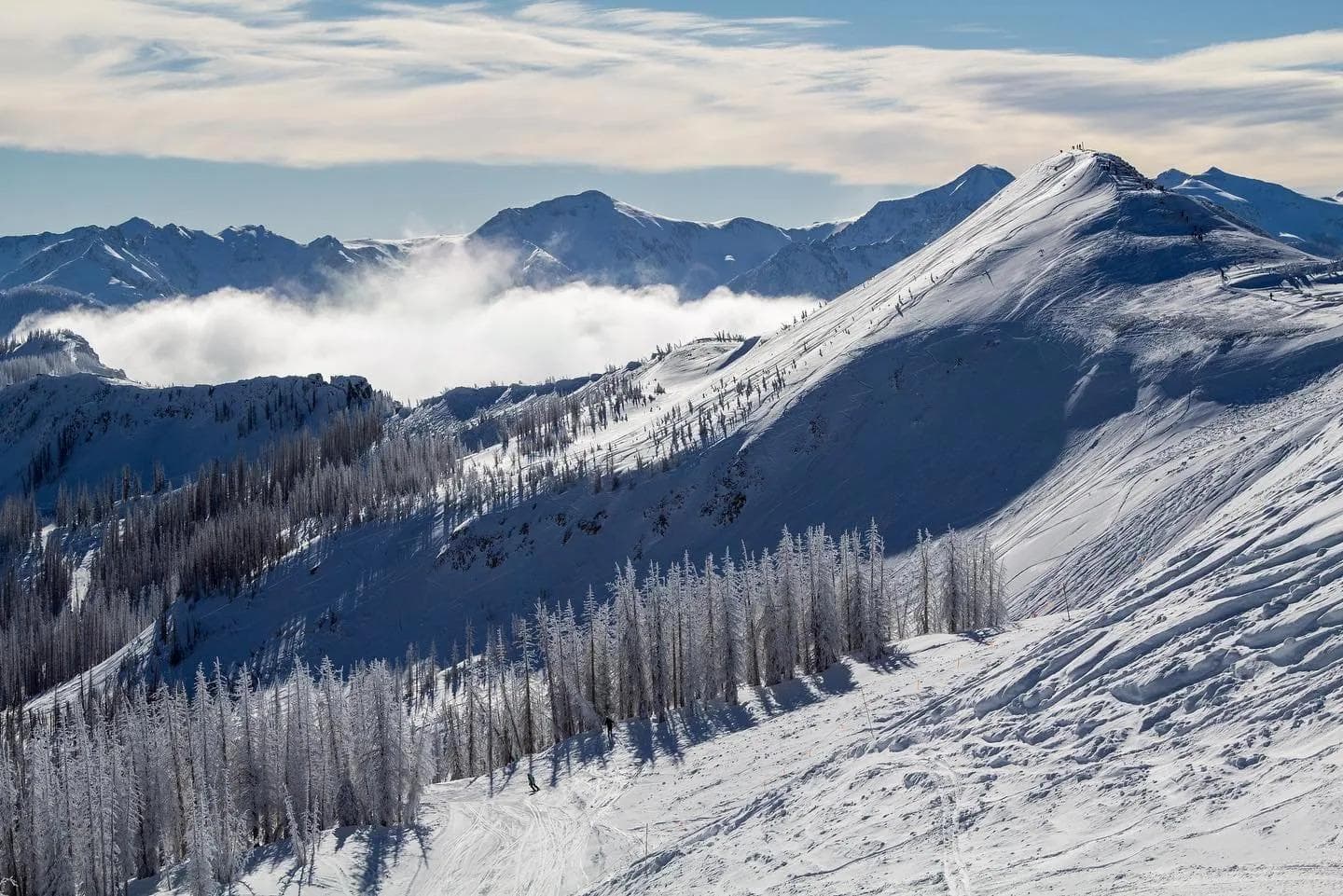
The wide open bowls of Wolf Creek Resort. Credit: Wolf Creek
Key Stats:
- Base elevation: 10,300 ft (3,139 m)
- Summit elevation: 11,900 ft (3,628 m)
- Vertical drop: 1,600 ft (489 m)
- Skiable acres: 1,600
- Annual snowfall: 430 inches
The terrain offers something for everyone: 20% beginner, 35% intermediate, 25% advanced, and 20% expert across 133 marked trails. The Alberta Lift serves advanced terrain, while Bonanza, Raven, and Nova lifts connect riders to beginner and intermediate runs. The diverse terrain includes everything from wide-open bowls to gladed tree skiing.
Wolf Creek's thoughtfully designed network of 10 lifts provides efficient access to the entire mountain. With 4 high-speed options among the 7 chairlifts, the lift system emphasizes efficiency and minimal wait times, allowing you to maximize your time on the slopes.
Wolf Creek's remote location in southern Colorado keeps crowds minimal compared to I-70 corridor resorts. With adult tickets at just $92 during peak periods, it's also one of Colorado's best values, making the extra driving time worthwhile for powder hunters. The resort typically opens by early November thanks to its abundant early-season snowfall.
Best for: Powder skiers, budget-conscious riders, those seeking authentic ski culture
Avoid if: You want extensive base village amenities or nightlife
Insider tip: Plan your visit when southwestern storm systems move through, as Wolf Creek often receives significantly more snow than other Colorado resorts during these weather patterns.
#6: Winter Park - Mary Jane's Moguls
Sprawling across 3,081 acres, Winter Park Resort has been operating since 1940. With seven distinct territories, the resort combines authentic mountain character with modern amenities. The Mary Jane territory is particularly famous for its challenging moguls and tree runs.

The expansive terrain found at Winter Park. Credit: Winter Park Resort
Key Stats:
- Base elevation: 9,000 ft (2,743 m)
- Summit elevation: 12,060 ft (3,676 m)
- Vertical drop: 3,060 ft (933 m)
- Skiable acres: 3,081
- Annual snowfall: 345 inches
Winter Park offers diverse terrain with 24% beginner, 22% intermediate, 50% advanced, and 4% expert. The 171 marked trails are serviced by 24 lifts, including 11 high-speed options that can move over 40,000 riders per hour. The resort's seven territories (Winter Park, Mary Jane, Parsenn Bowl, Vasquez Ridge, Eagle Wind, Terrain Park, and Cirro) each offer distinct experiences.
Winter Park's network efficiently connects all corners of this vast mountain playground. The 10-person Gondola whisks you from the base to the heart of the mountain in minutes, while high-speed six-person chairs like the Super Gauge Express and Panoramic Express access prime skiing terrain.
Located 67 miles from Denver, Winter Park provides good accessibility, especially via the Winter Park Express train that runs directly from Denver's Union Station to the resort base. The peak-day ticket price of $149 sits in the mid-range for major Colorado resorts. The resort is on the Ikon Pass, providing excellent value for season pass holders.
Best for: Mogul skiers, families wanting varied terrain, Front Range locals
Avoid if: You dislike bumps or are seeking the absolute steepest terrain
Insider tip: To avoid weekend crowds from Denver, target mid-week visits or explore the less-trafficked Vasquez Ridge and Eagle Wind territories during peak periods.
#5: Vail - Massive Scale, Back Bowls
As one of North America's largest ski resorts, Vail's 5,317 acres offer an immense and varied skiing experience. The resort's legendary Back Bowls and Blue Sky Basin provide unmatched terrain variety, while the front side delivers perfectly groomed runs and family-friendly zones.

The Sun Up lift in the legendary Vail Back Bowls. Credit: Vail Resort
Key Stats:
- Base elevation: 8,120 ft (2,475 m)
- Summit elevation: 11,570 ft (3,526 m)
- Vertical drop: 3,450 ft (1,051 m)
- Skiable acres: 5,317
- Annual snowfall: 354 inches
The terrain breakdown shows something for everyone: 18% beginner, 29% intermediate, 49% advanced, and 4% expert across 195 marked trails. The 33 lifts, including 21 high-speed options, efficiently move skiers across the vast terrain. The lift system can transport over 60,000 skiers per hour, though holiday periods can still see significant wait times.
Vail's seven legendary Back Bowls span seven miles and offer more than 3,000 acres of wide-open, mostly advanced terrain. Blue Sky Basin provides a more remote backcountry feel while still being lift-served. The front side features extensive groomed terrain, particularly on the western portion of the mountain.
The downside is evident in peak-day ticket prices reaching $249 and the crowds, particularly on weekends and holidays. Look into the Epic Pass for better value if you plan multiple days. For the best experience, ski Vail mid-week or target the less-trafficked areas like Blue Sky Basin early in the morning.
Best for: Intermediate to advanced skiers, those wanting terrain variety, visitors seeking extensive amenities
Avoid if: You're on a tight budget or hate crowds
Insider tip: During busy periods, start your day on the western edge of the mountain (Game Creek or Eagle's Nest), then work your way east through the Back Bowls as the day progresses.
#4: Aspen Mountain - Sophisticated Skiing
Rising directly from downtown Aspen, this iconic 675-acre mountain delivers a refined skiing experience with no beginner terrain. Since 1947, Aspen Mountain (sometimes called Ajax) has combined challenging runs with exceptional service and a distinct lack of crowds.

An aerial short of Aspen Mountain. Credit: Aspen Mountain
Key Stats:
- Base elevation: 7,945 ft (2,422 m)
- Summit elevation: 11,212 ft (3,418 m)
- Vertical drop: 3,267 ft (996 m)
- Skiable acres: 675
- Annual snowfall: 300 inches
The terrain distribution is telling: 0% beginner, 48% intermediate, 26% advanced, and 26% expert. The 76 trails are accessed by 8 lifts, including the Silver Queen Gondola that rises 3,267 vertical feet from downtown Aspen to the summit. The mountain's face offers multiple steeps and bump runs, while the western side features exceptional fall-line cruisers.
Aspen Mountain's steep $259 peak-day ticket price is offset by the quality of the experience: minimal lift lines, impeccably maintained trails, and direct access to Aspen's world-class dining and shopping. The mountain's relatively small size is counterbalanced by the ability to easily access three other Aspen Snowmass resorts with a single ticket.
The apres-ski scene in downtown Aspen ranks among the best in North America, with options ranging from casual pubs to exclusive lounges. The resort operates on the Ikon and Mountain Collective pass programs, providing better value for multiple-day visitors.
Best for: Intermediate to expert skiers, those seeking a refined experience
Avoid if: You're a beginner or want extensive terrain parks
Insider tip: Take the last gondola up at 3:30 PM and enjoy uncrowded final runs, then ski right into town for apres at Ajax Tavern or Shlomo's.
#3: Beaver Creek - Refined Experience, Excellent Groomers
Beaver Creek combines challenging steeps with immaculately groomed cruisers across its 1,832 acres. The resort's commitment to service - including famous fresh cookies served daily at 3 pm - creates a distinct experience that balances luxury with legitimate skiing credentials.

Early morning on a gondola at Beaver Creek Resort. Credit: Beaver Creek
Key Stats:
- Base elevation: 7,400 ft (2,255 m)
- Summit elevation: 11,440 ft (3,487 m)
- Vertical drop: 4,040 ft (1,231 m)
- Skiable acres: 1,832
- Annual snowfall: 325 inches
The terrain offers good variety: 19% beginner, 43% intermediate, 32% advanced, and 6% expert. The Birds of Prey downhill course provides World Cup-level terrain, while perfectly manicured groomers satisfy cruisers. The Stone Creek Chutes offer challenging expert terrain, while the family-friendly zones around Red Buffalo Park provide ideal learning environments.
Beaver Creek's 26 lifts, including 17 high-speed options, ensure minimal waiting even during peak periods. The Centennial Express high-speed combination lift (gondola cabins and chairs on the same cable) efficiently moves skiers from the base, while the Birds of Prey Express provides access to the resort's signature terrain.
The $239 peak-day ticket price reflects the premium experience, but the smaller crowds compared to neighboring Vail often justify the cost. The resort is part of the Epic Pass program, offering better value for multi-day visits. The pedestrian village provides luxury accommodations, fine dining, and high-end shopping in a pristine setting.
Best for: Families, intermediate skiers who appreciate groomed terrain, luxury seekers
Avoid if: You're seeking extreme terrain or budget options
Insider tip: Don't miss the daily cookie service at 3 PM at the base area, and consider reserving the White Carpet Club for a premium base lodge experience with private lockers and concierge service.
#2: Steamboat - Champagne Powder and Tree Skiing
Steamboat's 2,965 acres have earned global recognition for its trademarked "Champagne Powder" - exceptionally light, dry snow perfect for floating through the resort's famous tree runs. With a distinct Western heritage, Steamboat combines authentic cowboy culture with world-class skiing.
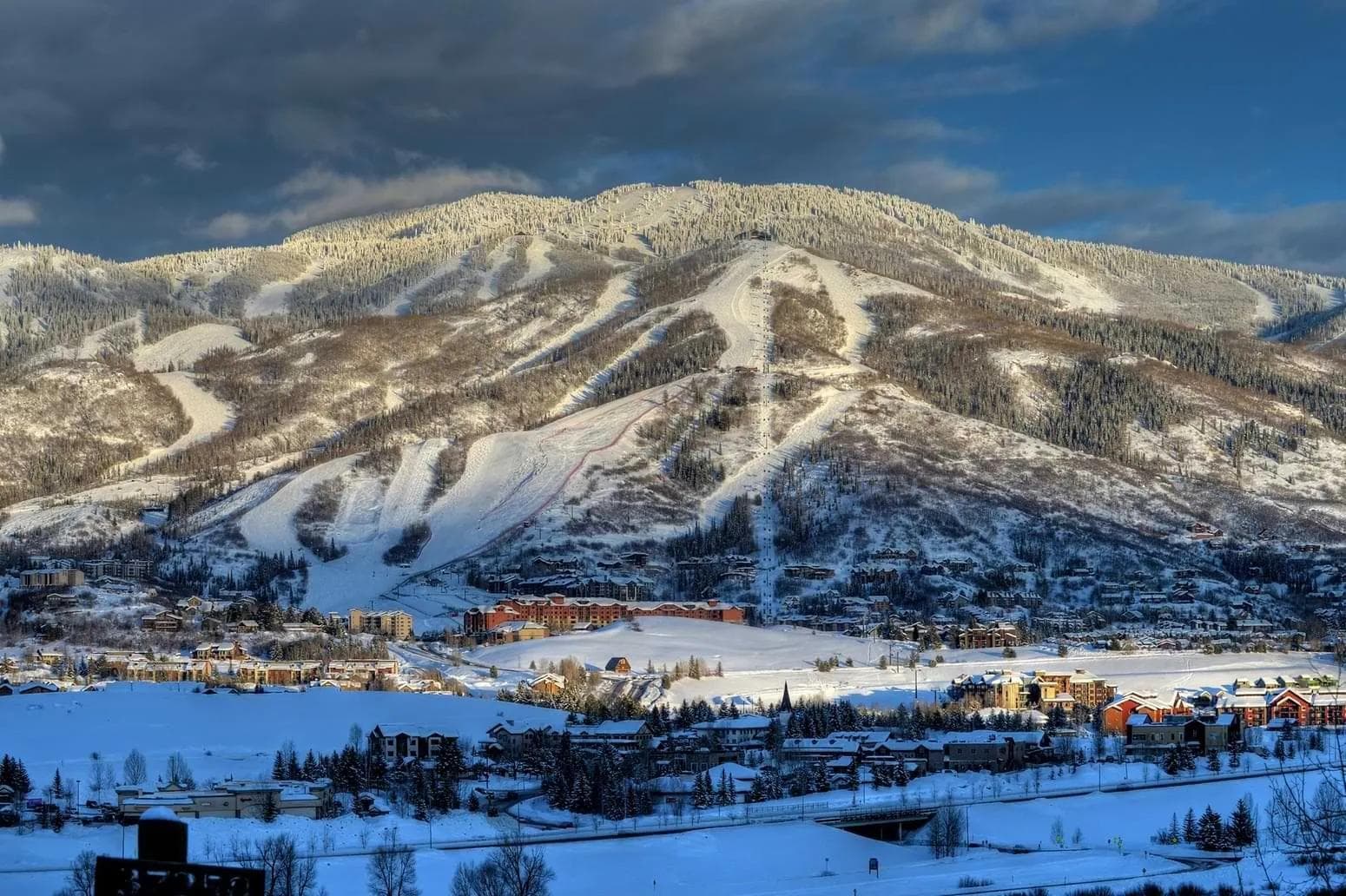
Steamboat after a fresh snowfall blankets the resort. Credit: Steamboat
Key Stats:
- Base elevation: 6,900 ft (2,103 m)
- Summit elevation: 10,568 ft (3,221 m)
- Vertical drop: 3,668 ft (1,118 m)
- Skiable acres: 2,965
- Annual snowfall: 314 inches
The terrain breakdown provides options for everyone: 14% beginner, 42% intermediate, 44% advanced/expert. Steamboat's legendary tree skiing in areas like Shadows and Closets offers some of North America's best glade experiences. The Pioneer Ridge and Pony Express areas provide excellent advanced terrain, while the lower mountain offers some of Colorado's best beginner areas.
The resort's 18 lifts include 9 high-speed options that efficiently transport skiers around the mountain. Recent upgrades include the Wild Blue Gondola, significantly enhancing uphill capacity. The lower village gondola provides convenient access from accommodations to the ski base.
Steamboat's relative isolation (3 hours from Denver) keeps crowds manageable, though the $219 peak-day ticket price matches other premium Colorado resorts. The resort is on the Ikon Pass, providing excellent value for multiple visits. The authentic western town of Steamboat Springs offers an unpretentious alternative to more glamorous ski towns, with natural hot springs providing perfect post-skiing recovery.
Best for: Tree skiers, powder hunters, families
Avoid if: You prefer above-treeline alpine terrain
Insider tip: Check snow reports carefully - when Steamboat reports 6+ inches overnight, prioritize it over other resorts, as its snow quality is unmatched when conditions are right.
#1: Telluride - Perfect Balance of Terrain, Views, and Character
Telluride stands as Colorado's most complete ski resort, combining challenging expert terrain, approachable learning areas, spectacular scenery, and an authentic mountain town. The resort's 2,000+ acres offer a perfect balance that satisfies every type of skier.
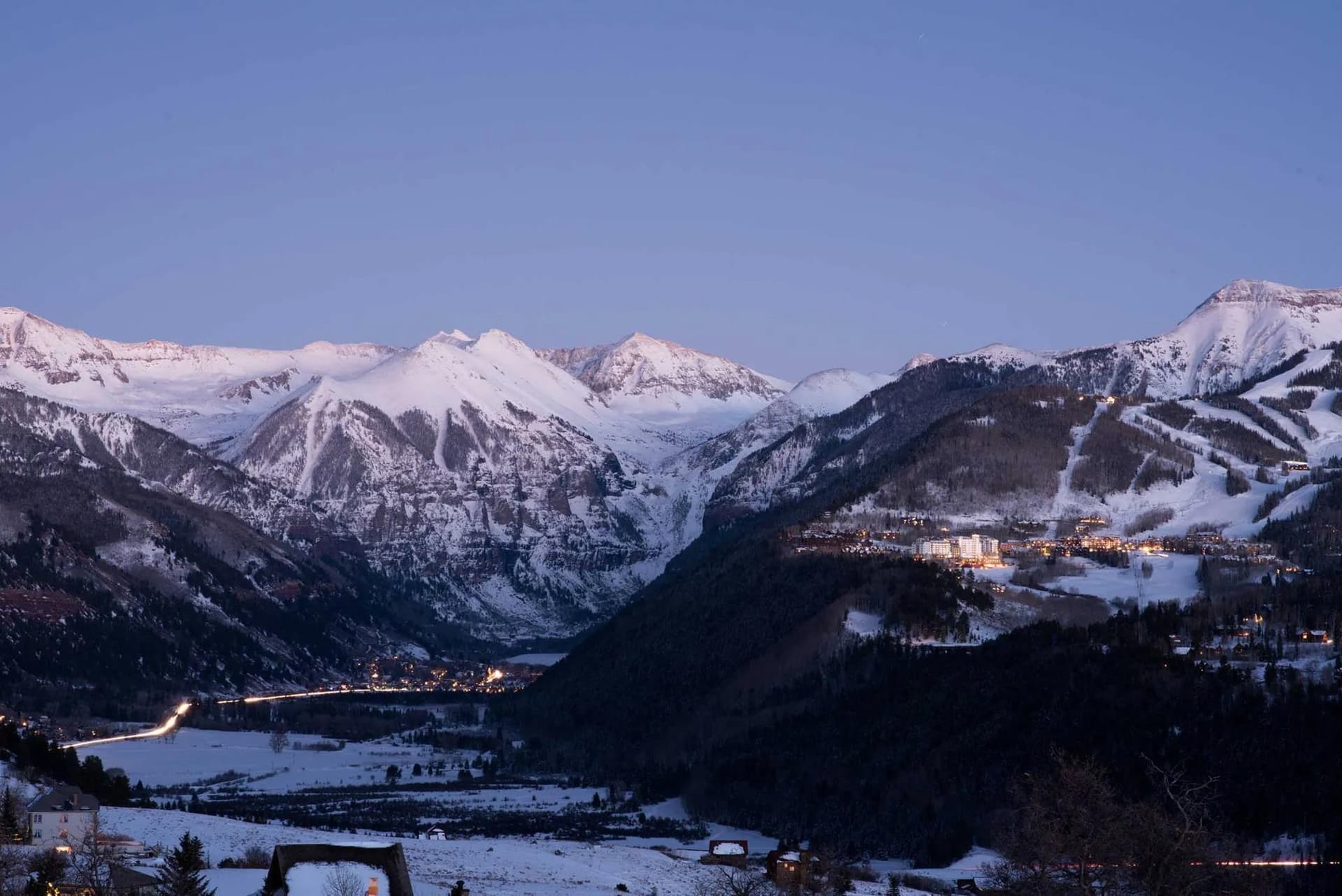
The peaks that tower around Telluride Resort. Credit: Telluride
Key Stats:
- Base elevation: 8,725 ft (2,659 m)
- Summit elevation: 13,150 ft (4,008 m)
- Vertical drop: 4,425 ft (1,349 m)
- Skiable acres: 2,000+
- Annual snowfall: 280 inches
The terrain diversity is exceptional: 23% beginner, 36% intermediate, 41% advanced/expert. Revelation Bowl and Gold Hill provide legitimately challenging steeps, while the Prospect Bowl area offers excellent learning terrain. The Plunge and See Forever runs provide some of Colorado's most spectacular views, while Palmyra Peak offers hike-to terrain that rivals anything in North America.
Telluride's 18 lifts include 9 high-speed options that provide access to everything from the historic mining town to the resort's highest peaks. The free gondola connecting Mountain Village with the historic town of Telluride operates until midnight, offering both transportation and sightseeing.
The remote location (6+ hours from Denver) keeps crowds minimal, though the $199 peak-day ticket price is substantial. The resort is part of the Epic Pass program, offering value for multi-day visitors. The historic town of Telluride provides an authentic Colorado experience with excellent dining, shopping, and nightlife options, while Mountain Village offers ski-in/ski-out convenience.
What truly sets Telluride apart is the combination of exceptional terrain, the free gondola connecting the historic town with Mountain Village, and the absence of crowds that plague other Colorado resorts. For those willing to make the journey, Telluride delivers Colorado's most complete ski experience.
Best for: Skiers wanting terrain variety, authentic mountain town experience, smaller crowds
Avoid if: Easy access from Denver is your priority
Insider tip: Split your stay between Mountain Village (for ski access) and the historic town (for atmosphere) to experience both aspects of Telluride.
Conclusion
Colorado's ski resorts offer remarkable diversity, from the enormous terrain of Vail to the authentic powder experience of Wolf Creek. The perfect choice depends on your priorities: access, budget, terrain preferences, or amenities.
For families and skill progression, consider Beaver Creek or Buttermilk. Powder hunters should target Wolf Creek or Steamboat. Those seeking challenging terrain will find satisfaction at A-Basin, Telluride, or Aspen Highlands.
When planning your Colorado ski trip, consider these factors:
- Timing: January and February typically offer the best combination of snow conditions and reasonable crowds, while March provides more sunshine with still-excellent snow. Early season (November/December) and late season (April) can be hit-or-miss for conditions but offer lower prices.
- Passes: The Ikon Pass covers Winter Park, Steamboat, Copper Mountain, and all Aspen resorts. The Epic Pass includes Vail, Beaver Creek, Breckenridge, Keystone, and Crested Butte. The Mountain Collective offers limited days at Aspen and A-Basin.
- Transportation: Flying into Denver provides access to most resorts, though regional airports in Aspen, Eagle (Vail), Hayden (Steamboat), Montrose (Telluride), and Gunnison (Crested Butte) offer more convenient options for specific destinations.
Honorable mentions go to Copper Mountain for its naturally divided terrain, Crested Butte for its extreme steeps, and Loveland for its excellent snow and accessibility.



